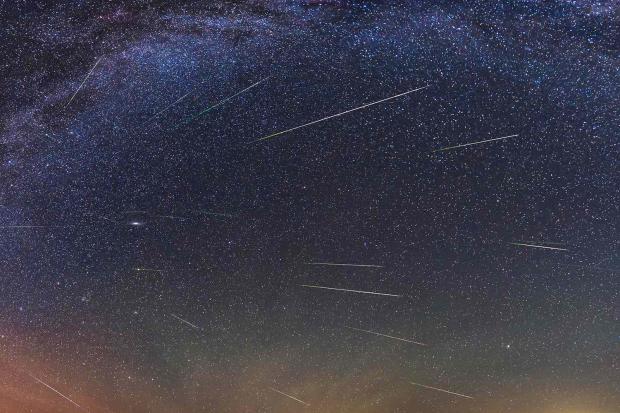
Breaking News
 BREAKING EXCLUSIVE: DOGE Investigation Discovers CIA/USAID & Soros Open Society...
BREAKING EXCLUSIVE: DOGE Investigation Discovers CIA/USAID & Soros Open Society...
 Former Capitol Police Chief publicly confirms Pelosi set the table for J6…
Former Capitol Police Chief publicly confirms Pelosi set the table for J6…
 Regent Craft Wing in Ground Effect Could Revive Giant Cargo Plane Dreams
Regent Craft Wing in Ground Effect Could Revive Giant Cargo Plane Dreams
 FBI Ignored Dem Whistleblower On Schiff's Alleged Criminal Leaks To Smear Trump
FBI Ignored Dem Whistleblower On Schiff's Alleged Criminal Leaks To Smear Trump
Top Tech News
 3D printing set to slash nuclear plant build times & costs
3D printing set to slash nuclear plant build times & costs
 You can design the wheels for NASA's next moon vehicle with the 'Rock and Roll Challenge
You can design the wheels for NASA's next moon vehicle with the 'Rock and Roll Challenge
 'Robot skin' beats human reflexes, transforms grip with fabric-powered touch
'Robot skin' beats human reflexes, transforms grip with fabric-powered touch
 World's first nuclear fusion plant being built in US to power Microsoft data centers
World's first nuclear fusion plant being built in US to power Microsoft data centers
 The mitochondria are more than just the "powerhouse of the cell" – they initiate immune...
The mitochondria are more than just the "powerhouse of the cell" – they initiate immune...
 Historic Aviation Engine Advance to Unlock Hypersonic Mach 10 Planes
Historic Aviation Engine Advance to Unlock Hypersonic Mach 10 Planes
 OpenAI CEO Sam Altman Pitches Eyeball-Scanning World ID to Bankers
OpenAI CEO Sam Altman Pitches Eyeball-Scanning World ID to Bankers
 New 3D-printed titanium alloy is stronger and cheaper than ever before
New 3D-printed titanium alloy is stronger and cheaper than ever before
 What is Unitree's new $6,000 humanoid robot good for?
What is Unitree's new $6,000 humanoid robot good for?
 "No CGI, No AI, Pure Engineering": Watch Raw Footage Of 'Star Wars'-Style Speeder
"No CGI, No AI, Pure Engineering": Watch Raw Footage Of 'Star Wars'-Style Speeder
Don't miss Perseid meteor shower 2025 peak Aug. 12-13: Here's what you need to know

The Perseid meteor shower hits its peak on Aug. 12-13, bringing with it a torrent of shooting stars along with the potential for spectacular fireball sightings.
The Perseids are one of the most highly anticipated shooting star displays of the year. However, the 2025 shower happens to coincide with the rise of a waning gibbous moon, the glare from which will make it a challenge to spot all but the brightest of meteors.
Still, it's worth heading out to a dark sky location for a meteor hunt, especially in light of the Perseids' reputation for spawning impressive fireballs! The best time to spot Perseids will be in the predawn hours of Aug. 13, when up to 100 shooting stars per hour would be visible under ideal conditions, though many will be hidden this year in the glare of the 86%-lit waning gibbous moon.
"The best rates will probably be near 15 per hour as dim meteors make up a majority of the activity," meteor expert Robert Lunsford from the American Meteor Society, told Space.com in an email. You may also catch meteors as early as 10 p.m. local time, according to NASA.
"You can watch for long Perseid earthgrazers as soon as it gets dark until the moon begins to interfere. This will be about an hour for most folks," Lunsford continued.
Though the rates will be low at this time, any meteors spotted will be long and impressive, Lunsford explained.
You can differentiate between Perseids and shooting stars from other origins by noting the path that a meteor takes as it blazes through the night sky.
Lunsford also recommends looking for Perseids sometime between 1 and 5 a.m. local time while looking toward the north with the moon at your back. "This is when you will see up to 15 per hour," Lunsford said.
Meteors associated with the August shower will always be spotted streaking away from a point of origin — or 'radiant' — located close to the magnitude 3.89 star Eta Persei in the constellation Perseus, which can be found in the northeastern sky with the moon and Saturn off to its right on the night of Aug. 12.



